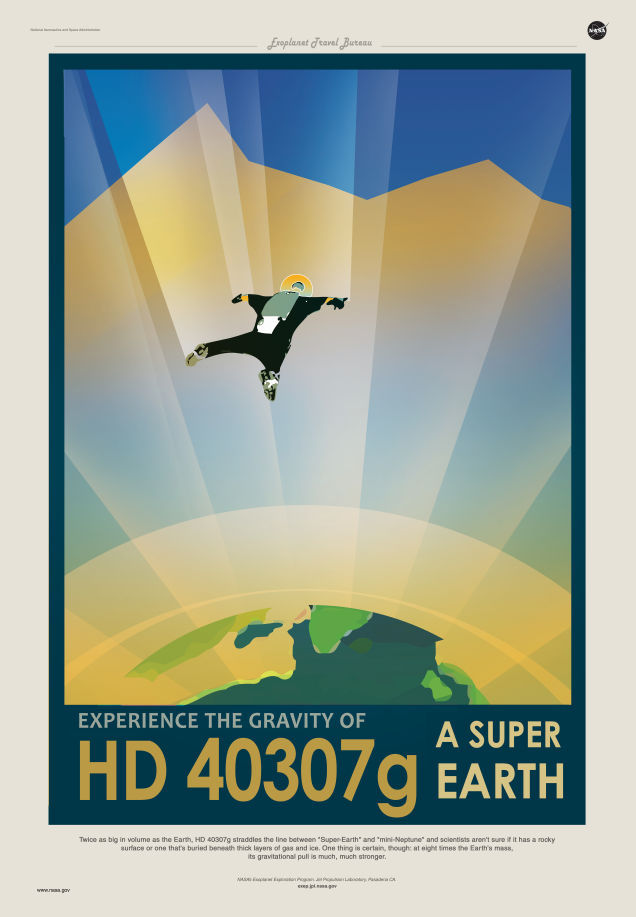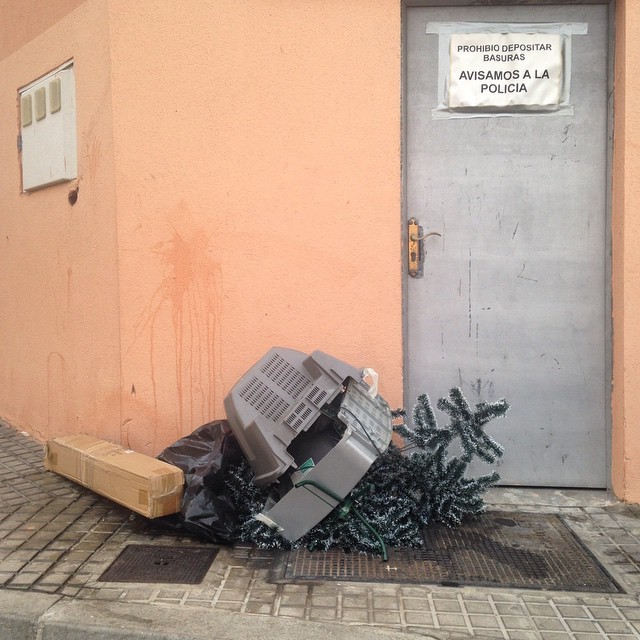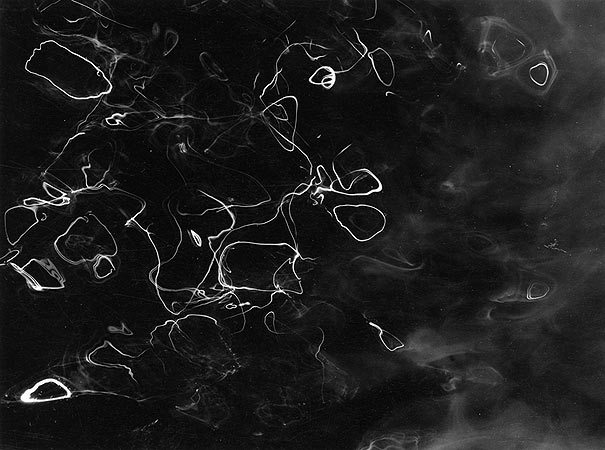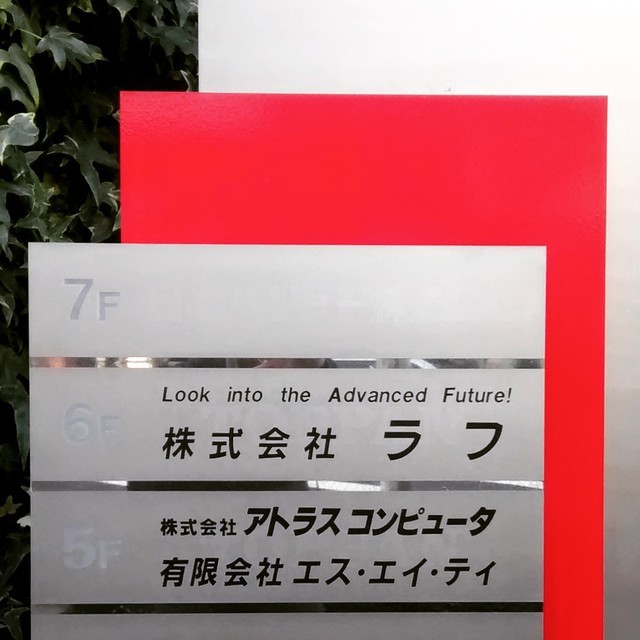Spacesuit Selfie by Christopher.Michel (via http://flic.kr/p/qGh9VC )

Spacesuit Selfie by Christopher.Michel (via http://flic.kr/p/qGh9VC )

Spacesuit Selfie by Christopher.Michel (via http://flic.kr/p/qGh9VC )

thursday. by (x)99. (via http://flic.kr/p/qJfyyg )

Jelly Fish by Hengki Koentjoro (via http://flic.kr/p/qqWrr4 )

An Astra-Torres dirigible [dirigeable escorteur] in the air at Issy-les-Moulineaux [France, 1914-1918] by Kees Kort Collection (via http://flic.kr/p/pLKZFv )

Recycle - 2010 by Poetic Medium (via http://flic.kr/p/qFpdDS )

that part in my heart forever frozen by lars on mars (via http://flic.kr/p/qr7esC )
Since libertarian ideology is often at odds with social solutions, holding private enterprise as an ideal and viewing private provisioning as best, the solutions presented are often pushing more entrepreneurship and voluntarism and ever more responsibilization. We just need a new start-up, or some new code, or some magical new business model! This is what Evgeny Morozov calls Solutionism, the belief that all difficulties have benign solutions, often of a technocratic nature. Morozov provides an example “when a Silicon Valley company tries to solve the problem of obesity by building a smart fork that will tell you that you’re eating too quickly, this […] puts the onus for reform on the individual.”

by 家宇李 (via http://flic.kr/p/ibyYX1 )

MILK by Maria Ustinova (via http://flic.kr/p/8prz3A )

咚咡 by Masakazu Chiba|蒔山 (via http://flic.kr/p/qCMp4o )



Decisive Content by Avard Woolaver (via http://flic.kr/p/eWFsng )

multi boat by ingrid_b21 (via http://flic.kr/p/nGzoWi )

coast by ingrid_b21 (via http://flic.kr/p/pLnUuU )

rock pool by ingrid_b21 (via http://flic.kr/p/none6E )
Quant à nous, journalistes, amis des journalistes assassinés, nous continuerons. Avec un peu moins de cœur à l’ouvrage, sans doute, pour quelque temps, mais avec une résolution plus forte. Nous savons que cette profession est parfois dangereuse. C’était jusqu’à présent le lot des reporters qui partent nous informer sur les pays en guerre. Il en meurt des dizaines chaque année. Maintenant on veut porter la guerre jusque dans nos salles de rédaction. Nous ne ferons pas la guerre. Nous ne sommes pas des soldats. Mais nous défendrons notre savoir-faire et notre vocation : aider le lecteur à se sentir citoyen. Ce n’est pas grand-chose mais c’est quelque chose. Avec une certitude mieux ancrée : maintenant, nous savons pourquoi nous faisons ce métier.
http://www.liberation.fr/societe/2015/01/07/charlie-vivra_1175771
Aside from issues of life and death, there is no more urgent task for American intellectuals and writers than to think critically about the salience, even the tyranny, of technology in individual and collective life. All revolutions exaggerate, and the digital revolution is no different. We are still in the middle of the great transformation, but it is not too early to begin to expose the exaggerations, and to sort out the continuities from the discontinuities. The burden of proof falls on the revolutionaries, and their success in the marketplace is not sufficient proof. Presumptions of obsolescence, which are often nothing more than the marketing techniques of corporate behemoths, need to be scrupulously examined. By now we are familiar enough with the magnitude of the changes in all the spheres of our existence to move beyond the futuristic rhapsodies that characterize much of the literature on the subject. We can no longer roll over and celebrate and shop. Every phone in every pocket contains a “picture of ourselves,” and we must ascertain what that picture is and whether we should wish to resist it. Here is a humanist proposition for the age of Google: The processing of information is not the highest aim to which the human spirit can aspire, and neither is competitiveness in a global economy. The character of our society cannot be determined by engineers.
http://www.nytimes.com/2015/01/18/books/review/among-the-disrupted.html?_r=1






Before the availability of the tape recorder and during the 1950s, when vinyl was scarce, people in the Soviet Union began making records of banned Western music on discarded x-rays. With the help of a special device, banned bootlegged jazz and rock ‘n’ roll records were “pressed” on thick radiographs salvaged from hospital waste bins and then cut into discs of 23-25 centimeters in diameter. “They would cut the X-ray into a crude circle with manicure scissors and use a cigarette to burn a hole,” says author Anya von Bremzen. “You’d have Elvis on the lungs, Duke Ellington on Aunt Masha’s brain scan — forbidden Western music captured on the interiors of Soviet citizens.”
“
Ingredients:
Blend well in a large bowl, shape into a round ball with your hands and place it neatly in a habitable zone area around a young star. Do not over mix. Heat until mixture becomes a white hot glowing ball. Bake for a few million years. Cool until color changes from white to yellow to red and a golden-brown crust forms. It should not give off light anymore. Season with a dash of water and organic compounds. It will shrink a bit as steam escapes and clouds and oceans form. Stand back and wait a few more million years to see what happens. If you are lucky, a thin frosting of life may appear on the surface of your new world.”
–The Recipe for Making an Earth-Like Planet | Motherboard (viafuckyeahdarkextropian)

“Protopia is moving toward progress rather than perfection. Science is protopian. It means investing into process instead of products.”
–Kevin Kelly
Topic 478: Bruce Sterling, Cory Doctorow & Jon Lebkowsky: State Of The World 2015
http://www.well.com/conf/inkwell.vue/topics/478/Bruce-Sterling-Cory-Doctorow-Jon-page01.html

Iceberg Graveyard by Christopher.Michel (via http://flic.kr/p/qpNHCh )

Twin Otters of Kenn Borek Air flying missions in Antarctica #runwaynotneeded by Christopher.Michel (via http://flic.kr/p/qpYrom )

#jesuischarlie by iamrcup (via http://instagram.com/p/xkC-LzpX5A/)
“
In his full first interview as surveillance commissioner, Tony Porter – a former senior counter-terrorism officer – said the public was complacent about encroaching surveillance and urged public bodies, including the police, to be more transparent about how they are increasingly using smart cameras to monitor people. Porter stressed that he was not anti-surveillance and insisted he was helping to improve standards by encouraging the adoption of a voluntary code. But he added: “The lack of public awareness about the nature of surveillance troubles me.” Porter, who was appointed to the independent role in March, is responsible for overseeing around 100,000 publicly operated CCTV cameras out of total of up to 6m surveillance cameras nationwide. He said: “When people say ‘the public love CCTV’, do they really know what it does and its capability? Do they know with advancing technology, and algorithms, it starts to predict behaviour?” He said he was very nervous about the “burgeoning use of body-worn videos [BWV]”, not just by the police but by university security staff, housing and environmental health officers – and even supermarket workers. “If people are going round with surveillance equipment attached to them, there should be a genuinely good and compelling reason for that. It changes the nature of society and raises moral and ethical issues … about what sort of society we want to live in … I’ve heard that supermarkets are issuing staff with body-worn videos. For what purpose? There is nothing immediately obvious to me.”
–UK public must wake up to risks of CCTV, says surveillance commissioner (viaiamdanw)
“what astronomers may have taken to be two massive balls of plasma locked in a gravitational embrace could actually be a very large, very hungry civilization devouring a hapless star.”
The Search for Starivores, Intelligent Life that Could Eat the Sun | Motherboard


Christmas is over here by nicolasnova (via http://instagram.com/p/xgS-aWGK3x/)
“DecisionQuest, a trial consulting firm, tells lawyers that when they give jurors information verbally, only 10 percent of them retain it after three days. But if the lawyers provide that information visually as well, juror retention zooms to 65 percent.”
–The Sneakiest Way Prosecutors Get a Guilty Verdict: PowerPoint | WIRED (viaiamdanw)
“JOMO n. The pleasure derived from no longer worrying about missing out on what other people are doing or saying.”
–
The Word of the Year from website ‘The Word Spy’, which tracks contemporary neologisms: If new words reflect the culture that coins them, then 2014 should have seen lots of neologisms related to the events, people, and obsessions that dominated our lives. Sure enough, as you’ll see in the awards that follow, new terms related to Ebola, Ferguson, selfies, and social networking are thick on the ground. Sometimes, if you look at new words a certain way, you can also detect undercurrents that reflect what wewish was happening in the culture.In 2014, by far the most dominant of these sub-trends was the desire to disconnect. The phraseboiling the frog might not have any scientific merit, but it still works as a metaphor and in 2014 many people began to feel like they were frogs slowly being boiled in a pot of information. Stress caused byFOMO (the fear of missing out) and the anxiety of nomophobia (being without one’s mobile phone) were turning us into nervous wrecks. [Highlight above is my own]
Baikonur Cosmodrome Space Launches - Manned and Cargo Mission Observation Tours

Aya Sofia (Istanbul)

Bernese Oberland by Briar34 (via http://flic.kr/p/pa142x )

Bernese Oberland by Briar34 (via http://flic.kr/p/ptkWsi )

Landsat_8_4th_10am Sampson Flat

Daguerreotype by Adam Fuss: Butterfly Daguerreotype, from the series My Ghost (2001)


Ruine muette by Karhl Thyran (via http://flic.kr/p/qpnbCm )

backstage by sinnen (via http://flic.kr/p/q5pDp5 )

by hrvoje. (via http://flic.kr/p/m4H7Pq )
Shit, this is astonishing. Redrow, a luxury apartment builder, have made this creepy, completely dystopic, half-American Psycho advert for the new London they’re currently metastasizing all over the city. Its protagonist lives in a world of almost continual night, with the hungry eyes and dead affect of an Ayn Rand wet dream: his world is constituted of chrome, glass, a palette of white-to-taupe, a spatter-pattern rug and one book, a single book, on graphic design. ‘Luxury’ is so often a code for this – double-glazed, polished steel, hermetically sealed in the back of a cab. Our man does not have conversations, but stares out at the city from the fifteenth floor (he does a lot of staring). The concept of conversation is alien to him, though he is shown having a screaming argument; as you see from his inventoried shelves, he has a passion for objects and this is how he treats women, as well.
Flat-toned, void affect, social cancer in a suit: a model for London living. Here’s a curious honesty about it all: houses in the suburbs are marketed still for the smiling happy family, all oak tables and smiling coffee mornings (in zone 4, the dog never even barks, let alone bites). In the central zones, having been cleared of many of their inconveniences (families, communities, *life*), now deadboxes are marketed to the single (wannabe singular) sub-Thatcherite dweeb who manages his violence only on a balance sheet, who wants to take life, pin it, and crush it behind plate glass. Let us burn it down.
“James Joyce fanfic is not a thing…at least not officially. One could argue that most postmodern literature is James Joyce fanfic, but that’s another conversation.”

our.upon.hour by jonathancastellino (via http://flic.kr/p/qoGLMR )

#texture #nature #flow [IMG]

“Through planning applications and radio licenses it’s possible to trace the routes these signals travel: each license lists the start and end location of each point-to-point link. Follow these lines; follow the money.”
–The Nor » Low Latency (viaiamdanw)

Genealogy of the Black Swan Problem as developed in Incerto and Silent Risk
On 27 August 1883, the Earth let out a noise louder than any it has made since. It was 10:02 AM local time when the sound emerged from the island of Krakatoa, which sits between Java and Sumatra in Indonesia. […] By 1883, weather stations in scores of cities across the world were using barometers to track changes in atmospheric pressure. Six hours and 47 minutes after the Krakatoa explosion, a spike of air pressure was detected in Calcutta. By 8 hours, the pulse reached Mauritius in the west and Melbourne and Sydney in the east. By 12 hours, St. Petersburg noticed the pulse, followed by Vienna, Rome, Paris, Berlin, and Munich. By 18 hours the pulse had reached New York, Washington DC, and Toronto. Amazingly, for as many as 5 days after the explosion, weather stations in 50 cities around the globe observed this unprecedented spike in pressure re-occuring like clockwork, approximately every 34 hours. That is roughly how long it takes sound to travel around the entire planet.
http://nautil.us/blog/the-sound-so-loud-that-it-circled-the-earth-four-times

Kawah Putih by Hengki Koentjoro (via http://flic.kr/p/qozbMv )

The right tools for the job. by chris_michel (via http://instagram.com/p/xbDv5PvCOC/)
“The ancient Maya city of Tikal may have used intensive agricultural practices to maintain its large population, according to a study by David Lentz of the University of Cincinnati and colleagues. While these practices enabled sustainable population growth for some time, they may eventually have exacerbated a drought that caused the abandonment of the city.”
Intensive agriculture may have exacerbated drought in ancient Maya city
It was not the individual events that made 2014 so topsy-turvy: after all, what could top the 1991 Soviet collapse for sheer disruption of the status quo? The year instead was remarkable for the number of big, consequential and utterly unforeseen events—Russia’s invasion of Ukraine, the rise of ISIL, the diplomatic breakthrough between the US and Cuba, the emergence of US shale oil and the collapse of oil prices, not to mention a clutch of other economic, business and market events. All in all, it has been evident for months that 2014 was a staggering maelstrom of surprises.
http://qz.com/320516/how–2014-played-havoc-with-geopolitical-predictions-including-ours/
Once on the bottom, they waited and watched. And they got some big surprises. “We saw the deepest living fish ever recorded,” says Drazen. “Definitely something new. We took one look at the thing and were amazed — big, wide, winglike fins, this eel-like tail and this scalloped face. It was very unique.” They nicknamed it the “ghost fish” for its almost translucent skin. It appears to be a new species of snailfish — living 5 miles below the surface.
Plumbing is a new mechanism for inter-process communication in Plan 9, specifically the passing of messages between interactive programs as part of the user interface. Although plumbing shares some properties with familiar notions such as cut and paste, it offers a more general data exchange mechanism without imposing a particular user interface. From Plumbing and other utilities by Rob Pike
http://www.mostlymaths.net/2013/04/just-as-mario-using-plan9-plumber.html
Accelerationism is, for me, worth studying briefly, as it seems to me to be a response to pervasive capitalism brought on by the mental illnesses that capitalism has induced in people. (Schizophrenia is talked about, a lot, e.g. “in Nietzsche’s ‘schizo’ delirium he announced ‘I am all the names of history’”) Noys himself calls them “the fetishists of capital” at one point, but I have a feeling, and Noys often implies, that it’s a deeper malaise. Capitalism is lately cast as that Lovecraftian force that some people should not look directly at for fear of going completely mad and being banged up in the Arkham Sanitarium. Maybe meditating upon it as some Dark God From Beyond Space that is crushing the world into new shapes just leads some people to rub their mouths on it and plead for it to go faster. And never stop. (Also: accelerationism, like speculative realism and its surrounding notions, kind of strikes me as Science Fiction Condition philosophical enterprise. its roots may indeed go back to the 19th Century, but the modern conception is something else.)
Adapting the absurdist metaphysical conjectures of Pataphysics (Alfred Jarry’s Science of imaginary solutions) to Botany creates a fantastic ecology of verdant pataphors. Metaflora, Phycological futurology and hypnogogic phyllotaxis perhaps? Libarynth invents and documents this new branch of speculative science and its related offshoots by ‘patafying’ the study of plants. Triffids take note! Maja Kuzmanovic and Nik Gaffney’s Cursory Speculations on Human Plant Interaction ‘explores the nature of surfaces and processes required to facilitate reciprocal interaction between humans and plants’. Examined in the paper: the continued evolution of human-plant symbiotics – in their somatic and syntactic protocols. This includes shamanic enthogenic communication and Thalient strategies.

On the way home by Ryan Kimball (via http://flic.kr/p/q5fDx8 )

“The Lego isn’t a one-off thing - it happens all the time. There’s a certain type of cigarette lighter that’s from a container spill more than 20 years ago which is still washing up on Cornish beaches today.”
–BBC News - The Cornish beaches where Lego keeps washing up (viaiamdanw)

Harry Callahan, “Sunlight on Water”, 1943

I AM walking through my north London neighbourhood on an unseasonably warm day in late autumn. I can hear birds tweeting in the trees, traffic prowling the back roads, children playing in gardens and Wi-Fi leaching from their homes. Against the familiar sounds of suburban life, it is somehow incongruous and appropriate at the same time. As I approach Turnpike Lane tube station and descend to the underground platform, I catch the now familiar gurgle of the public Wi-Fi hub, as well as the staff network beside it. On board the train, these sounds fade into silence as we burrow into the tunnels leading to central London. I have been able to hear these fields since last week. This wasn’t the result of a sudden mutation or years of transcendental meditation, but an upgrade to my hearing aids. With a grant from Nesta, the UK innovation charity, sound artist Daniel Jones and I built Phantom Terrains, an experimental tool for making Wi-Fi fields audible.The man who can hear Wi-Fi wherever he walks - New Scientist


*J G Ballard working on the opening page of his manuscript of “Crash”


Editing Finnegans Wake

2013-10-08_37 negative48 by e3.fird (via http://flic.kr/p/qod2Y6 )

With Vikram Sarabhai ‘Father of the Indian Space Program’, a symbolic rocket and little Mars space probes hanging from a stick. #mangalaforall by fanabulous (via http://instagram.com/p/xYQYJmx3El/)

THE ADVANCED FUTURE. LOOK INTO IT. by strctrnrrtv (via http://instagram.com/p/xYwoJ-D0B4/)
The Random Darknet Shopper is an automated online shopping bot which we provide with a budget of $100 in Bitcoins per week. Once a week the bot goes on shopping spree in the deep web where it randomly choses and purchases one item and has it mailed to us. The items are shown in the exhibition «The Darknet. From Memes to Onionland» at Kunst Halle St. Gallen. Each new object ads to a landscape of traded goods from the Darknet.

A British ‘Bristol’ and a German ‘Fokker’ colide in mid-air during a dogfight, World War I.

2015-01-03 at 17.55.29

“I went home and noted: Only ever write when you have something worth writing. Write short stories because you want to. Write short novels because that’s what you want. Always defer or deny closure. Always break the structure. Always undermine or contradict the rationale. Always refuse a conceptually interpretable or comfortable ending. I thought for a bit and then added: You can offer resolution but only at another level. Then, finally: Keep saying no.”


Current reading material: Branding Terror: The Logotypes and Iconography of Insurgent Groups and Terrorist Organizations. I find this book amazing on both a surface level and a conceptual level. On the surface it’s an absolutely fascinating global survey of terrorist organizations with a breakdown of the symbology behind their choice of logos, right down to the Pantone colors used. On a conceptual level I’m repulsed and terrified by both sides of the study: the terror groups themselves for obvious reasons, and for more subtle reasons the insidiousness of global market capitalism, which in its shark-like ceaseless devouring is able to analyze even such outsider icons in terms of Pantone colors and graphic elements, treating the ISIS logo in the same category as the AT&T logo. It’s an amazing document for our times. Amazon link.
(via Clayton Cubitt on Instagram http://ift.tt/1K7rR8B)


Vertical Hold

She hooks it onto her belt so she can’t fall and then thrashes around for what seems like a whole minute until she’s not tangled up in the cable anymore, lust dangling by the waist, twisting around and around between the chopper and the street, out of control.

Titan, the mermaid moon.

more here
<em><strong><a href="http://lucid-ocean.tumblr.com/">lucid</a></strong></em>


Edward Emerson Barnard, View of Lightning, 17-12-1907.
Glass plate negative; 8.9 x 11.8 cm

Drawing three 90 degree angles in a curved space. One of the reasons we know the Earth is round.
Find this interesting? Then check out this “visual demonstration of a² + b² = c².”

The lodge room of St. Bartholomew Lodge No. 696, Wednesbury, England.



Busy London… #ampt #anonymous #tribegram #bnw_life #instagood #instalife #bw_crew #bnw_universe #lensblr #igersbordeaux #wearejuxt #igerslondon #london #bnw_bordeaux #body #shadows #igersgironde #legs #wu_bordeaux by hipstoresk (via http://flic.kr/p/qddwWH )

Tamarix’’ by Ralf Παῦλος (via http://flic.kr/p/kQq4Pi )

“Knipoog in het Frietmuseum van Brussel dat dit weekend deze gesigneerde foto ontvangt. Clin d'œil au Musée de la frite à Bruxelles qui recevra cette photo dédicacée ce week-end.”

Un concetto, uno soltanto, molto semplice. by plochingen (via http://flic.kr/p/qDiJJa )

Uscita by Lorenzo Carnevali (via http://flic.kr/p/qnf6eD )

2015-01-02 at 17.46.17
“The Ezadeen had been drifting without power about 40 nautical miles off the coast with as many as 450 people on board. “We know that it left from a Turkish port and was abandoned by its crew,” coastguard spokesman Filippo Marini told SkyTG24 television. “When we hailed the ship to ask about its status, a migrant woman responded, saying, ‘We are alone and we have no one to help us.’” It had been put on a collision course for the Italian coast but ran out of fuel, he said. A similar tactic was used by the crew of a ship which, on Tuesday, put out a distress call as it passed the Greek island of Corfu on its way into the Adriatic Sea. Almost 800 migrants, mostly Syrian refugees, landed in Italy the following day after the Italian rescue services took command of the vessel. The Moldovan-registered Blue Sky M was within five miles and 45 minutes’ sailing time of a disaster when it was boarded and brought under control.”
–Abandoned ship Ezadeen with 450 migrants on board being towed to Italy | World news | The Guardian (viaiamdanw)
